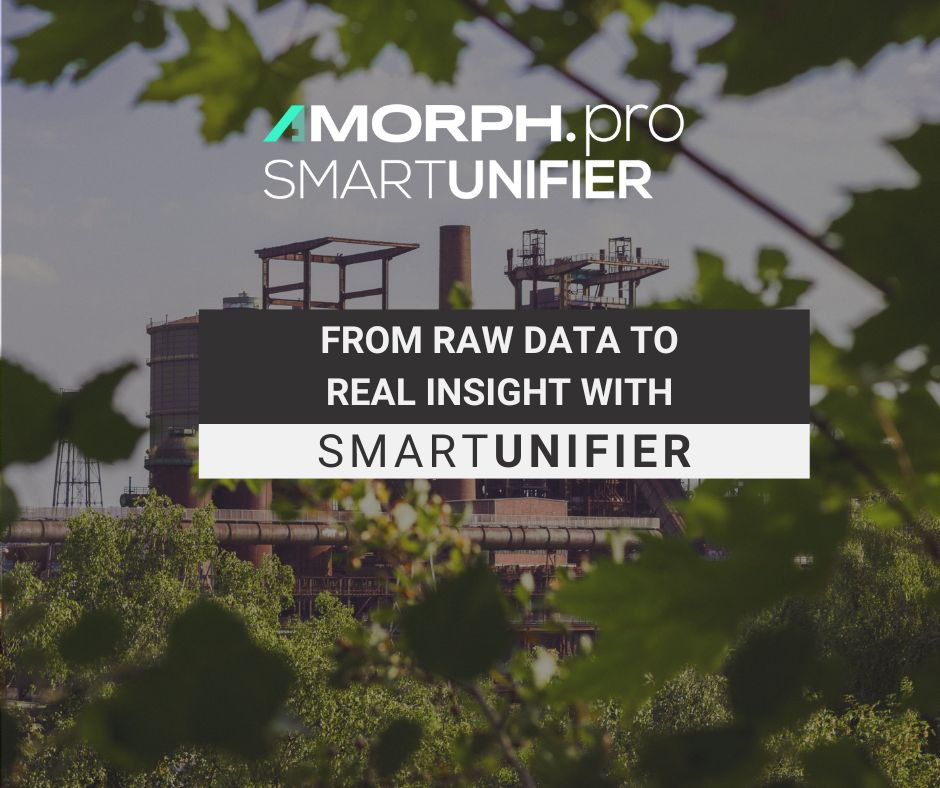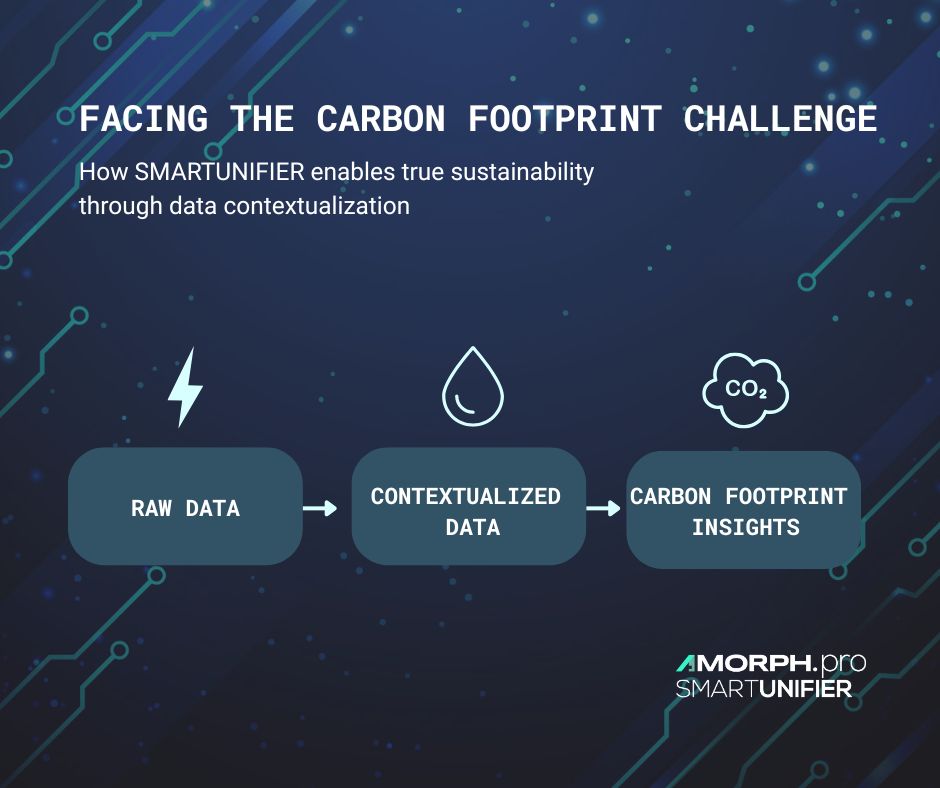From Raw Data to Real Insight: Tackling Emissions with SMARTUNIFIER

Facing the Carbon Footprint Challenge: Why Data Contextualization is the Key to Real Transparency
Imagine you run a business park with multiple tenants. Every month, you’re responsible for accurately recording and billing energy consumption, waste disposal, and heating and cooling usage—down to the hour and exact location.
Or maybe you’re a manufacturer producing custom metal goods. Each product batch is different. Averages and assumptions won’t cut it—you need to know the precise energy use of each lot, even each item, to calculate its carbon footprint accurately.
Or you’re simply responding to a growing market demand—or even a legal requirement—to declare the carbon footprint of every product you sell.
Now ask yourself: can you allocate every kilowatt-hour, drop of wastewater, or unit of evaporated refrigerant to a specific customer, batch, or serialized product?
No?
But you’re probably expecting this level of transparency from your suppliers, aren’t you?
The Pressure to Decarbonize is Real—and Growing
Businesses across industries are under increasing pressure to report and reduce their greenhouse gas emissions. Regulatory requirements are tightening. Customers and partners are demanding proof of sustainability. And carbon footprint declarations are becoming as essential as pricing and quality.
But sustainability isn’t just a checkbox. It’s a data problem. And the data? It’s scattered—across meters, machines, supply chains, and spreadsheets. Without context, it’s just noise.
This is where data contextualization becomes essential.
What is Data Contextualization?
Data contextualization means linking raw data (like energy consumption, heat output, or water usage) to the real-world context it came from: a customer, a machine, a production order, or even a specific product.
It’s the missing link between “what happened” and “who or what caused it.”
Contextualization helps to answer the hard questions:
- How much energy did this machine use for that order?
- What’s the environmental impact of this product in that batch?
- Who should be charged—or credited—for emissions saved?
It sounds simple, but making it happen in complex, interconnected production environments requires serious digital muscle.

Enter SMARTUNIFIER: Turning Data Into Meaningful Information
At AMORPH Systems, we believe that data contextualization isn’t optional anymore—it’s a critical success factor for carbon reporting, sustainability, and smart decision-making.
That’s why we developed SMARTUNIFIER.
SMARTUNIFIER is a powerful connectivity and contextualization platform that:
- Connects to meters, sensors, SCADA, PLCs, and more at the shop floor level.
- Links production and business systems like MES, ERP, and facility management.
- Enriches raw data with contextual information—who, what, where, when, and how.
- Stores and delivers that contextualized data to databases, analytics tools, or carbon calculation systems.
With Data contextualization means linking raw data (like energy consumption, heat output, or water usage) to the real-world context it came from: a customer, a machine, a production order, or even a specific product., your factory becomes transparent—each flow of energy, water, heat, or emissions is traceable to a specific source, product, or customer.
Why This Matters for Carbon Footprint Tracking
Emissions reporting frameworks like the Greenhouse Gas Protocol break down emissions into:
- Scope 1: Direct emissions from owned or controlled sources
- Scope 2: Indirect emissions from the generation of purchased energy
- Scope 3: All other indirect emissions, from purchased goods to product disposal
SMARTUNIFIER enables you to allocate energy and emissions across all these scopes, from upstream supplier data to downstream product lifecycle impacts.
And it does so securely, at scale, and in real time.
Data Contextualization: The Foundation for Sustainable Industry
Many companies talk about sustainability, but only a few have the tools to prove it. SMARTUNIFIER empowers you to:
- Build trust with your customers
- Comply with evolving regulatory frameworks
- Optimize operations by revealing hidden inefficiencies
- Make smarter, data-driven decisions for both business and the planet
Whether you’re managing a factory, a logistics hub, or a connected ecosystem of suppliers, contextualized data is your path to clarity—and credibility.
Ready to Make Your Operations Transparent?
Whether you’re just starting your sustainability journey or looking to upgrade your existing infrastructure, SMARTUNIFIER can help you unify your data integration across your organisation and transform raw data into business value.
👉 Contact us today to learn how SMARTUNIFIER can bring clarity, compliance, and confidence to your carbon footprint strategy.
